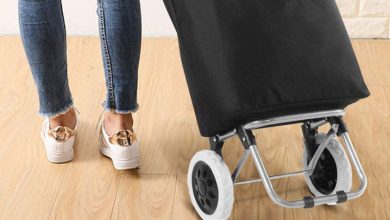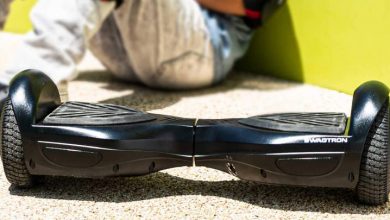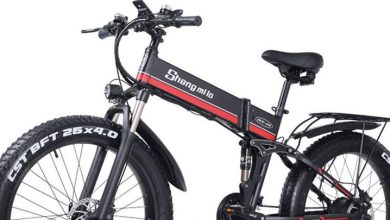
What is Nordic Walking? It is a sport derived from cross-country skiing, where you walk with leverage on two sticks, loading your body weight with each step. This action allows you to jump forward faster, improving the athleticism and tone of the muscle band.
For this reason, the choice of sticks is essential. There are many variables to consider to avoid making the wrong purchase. To overcome this inconvenience, here is everything you need to know about this sport and the characteristics to be evaluated before purchasing Nordic walking poles on Black Friday Deals.
Nordic Walking Poles: What are they and how do they work?
Main features
Nordic walking poles resemble cross-country ski poles and ensure fast walking results are as natural as possible. Their thrust on the ground increases the walking speed, allowing you to tone the muscles to the maximum and work with the muscles of the shoulders, arms, thighs, and buttocks. It is important to underline that no Nordic walker is walking without poles: it would be like practicing football without the ball!
What is the difference between hiking poles?
In Nordic walking, the poles advance quickly on the flat ground to work all body parts, while in hiking, the poles are used to find the right support uphill and downhill.
The poles’ movement is different: back and forth in Nordic walking, with the tips pointing backward to push yourself forward, on different supports depending on the terrain, and in a vertical position for hiking. Finally, while poles are a part of Nordic walking, they are only recommended for hiking.
How to use Nordic Walking poles
How Nordic Walking is practiced
Nordic walking is a sport that derives from cross-country skiing, where coordination is essential: using poles allows you to involve many body muscles with greater caloric expenditure and toning of the muscles themselves. The sticks help create a perfect balance of body parts, including the back, which should be kept as erect as possible during the action.
It is essential to alternate arms and legs: left hand forward, right leg back, and vice versa. To find the right coordination, pretend you don’t have sticks: you will realize the action is natural. The alternating step must be well done and well-coordinated: once you have found the right technique, you will have excellent benefits for the mind and the cardiovascular system.
Who is Nordic Walking recommended for?
Nordic walking is an endurance sport. For this reason, it is recommended to all who wish to regain and maintain their shape and tone. It doesn’t matter if you are already sporty or, on the contrary, completely sedentary: Nordic walking can be practiced by everyone, regardless of age or physical condition. It is enough to approach this sport cautiously and measure the effort according to your physical abilities.
How to choose Nordic Walking poles: What should you evaluate before buying?
Here are the features to evaluate before buying the sticks to be sure you have chosen the right model for your needs.
The handle
The handle can be produced with different materials: plastic is used in the cheapest models, while cork is considered the best material because it allows the hand’s skin to breathe.
The cork absorbs sweat, preventing the hand from sliding down or the grip from weakening. A middle ground is represented by elastomer, which increases grip and grip on the handle.
The lace (handguard)
Let’s move on to the lace, the handguard, a focal point for a good grip. We are far from the simple laces in ski poles: those produced for Nordic walking are specially created for a firm grip on the handle.
The latest generation models have laces that wrap entirely around the hand. It is a glove that helps separate the fingers from the thumb: this type of lace allows a firmer grip on the handle. We particularly like laces that can be easily released: having a hand available can always be useful!
The lace’s material must be resistant and elastic, but without exaggerating: otherwise, the hand would tend to drop on the handle. For true enthusiasts, there are sticks with grips and laces for the right and left hands.
The auction
Let’s move on to the auction: it can be produced in fiberglass, carbon, or aluminum. If you are looking for a light pole, the best is the carbon one: be careful, though, because lightness is created at the expense of resistance. In particular, it may happen that while traveling along mountain paths, the pole bends with extreme ease if you are traveling on particularly uneven ground.
In our opinion, carbon is the ideal choice for those who practice Nordic walking in the city, where there is no risk of bending the poles or practicing Nordic walking at intensive levels. Fiberglass and aluminum are recommended for mountain stretches since they are light but, above all, more resistant.
Apart from the material, the stick must be characterized by certain flexibility. While walking, it must flex to absorb the body’s weight without breaking. This particularity is essential to avoid overloading the hand and arm tendons, especially when traveling on tough, bumpy paths and road stretches.
The tip
When hiking mountain trails, it is recommended to use the plastic-coated metal tip so that the tip sinks into the ground but not over the top. If, on the other hand, you intend to walk in the city or on very hard and not very bumpy ground, where the metal tip would slip without taking hold, we advise you to replace it with the plastic one that, thanks to the wide base, allows a good grip on the asphalt.
There is an even different tip for snow, even wider than the previous one: in this way, the pole will not sink into the snowpack.
The height of the stick
A too-short stick can cause your back to arch forward, causing pain and poor posture. To understand which is the most suitable according to your height, it must be borne in mind that when holding the pole. It should form a right angle with the arm. Consequently, for a 5.5 ft tall person, the appropriate pole will be approximately 4 ft high.
Telescopic or fixed?
We have to ask ourselves the two questions: what use do we want to make of the sticks, and on what ground do we intend to use them? We recommend buying fixed poles for city use because they allow a better grip on the asphalt. Also, fixed poles are recommended for those who practice this sport at a high level, as they tolerate vibrations much better.
For those who dedicate themselves to the most uneven terrain or those who are new to this sport, we recommend the purchase of telescopic poles, possibly to be stored in a backpack. Those who opt for telescopic poles can choose a quick locking system with a screwing or fastening button.
The fastening button is used by stretching the stick until the button comes out on the rod: this allows you to find the appropriate measurement for your height faster, unlike the one with screwing, that must be meticulously fixed each time.
>>> Where to buy Nordic Walking poles?
The best poles for Nordic walking are those of Leki, recommended for experts on the subject and for those who practice this sport assiduously.



